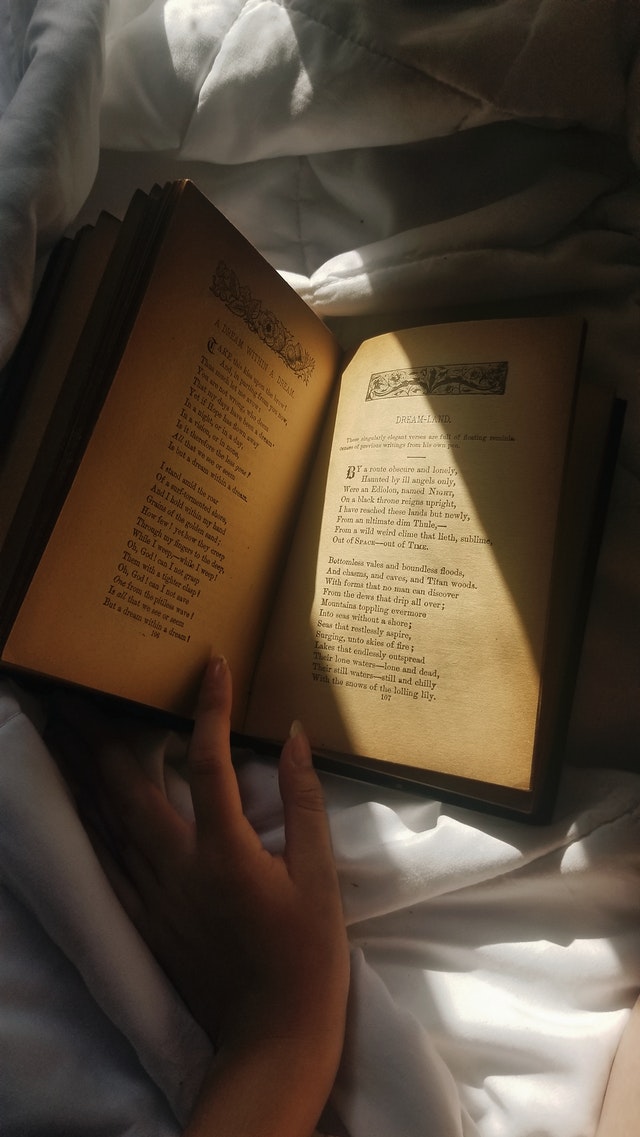Medieval literature: what it is, its origin, literary development, characteristics and more
Contents
What is medieval literature?
Although it is often called medieval literature, the truth is that it should focus mainly on the time in which it arises, so that this includes the literature developed in the Middle Ages in the European continent, a time that lasted about a thousand years and that begins with the fall of the Western Roman Empire, until the end with the beginning of the Renaissance.
This literary epoch was characterized mainly by the development of a literature composed from religious writings that included sacred and profane texts of the time. However, despite the great literary production of this time in history, most of the works lack a recognized author, so we are talking about a considerable percentage of anonymous works.
History and origin of the medieval literary period
Medieval literature was born with the reconquest of the Christians from the Muslim kingdoms in the 7th century, a process that spread over a large part of the Spanish territory and that brought with it a new language and a series of themes related to the exploits of the great heroes, themes that would be crucial for the development of the literature of this period. Thus, it will flourish with the native languages of the European continent, developing a great variety of texts that will be written not only in verse, but also in prose.
With the fall of the Roman Empire also came the fragmentation of Europe, which gave way to the new formation of national states that were also built with the vernacular languages. The first literary manifestations will take place when they begin to be recorded in writing. This, without leaving aside the extended power that the Catholic Church had achieved.

Thus, medieval literature will be subject to the hands of monks, as well as other artistic expressions, who, due to the intellectual preparation they possessed, dedicated themselves not only to literary production but also to the translation of ancient works on subjects they considered interesting.
Medieval literary development
One of the central axes of medieval literature will be the epic, on which medieval stories begin to consolidate often frequenting themes such as travel, especially of adventurers and the obstacles they must face and overcome to achieve their victories. This is how a large number of works begin to develop, which will be enriched by other stories of authors who also undertook their own journeys.
As for female participation, the truth is that at this time women did not have the same conditions as men, however, many of them who managed to start writing did so mainly through religious literature, a method that allowed them to gain renown little by little. This allowed that, after having published reflections and other content related to the Church, they could be canonized as Saints. This is how most of the female works were written by nuns.
Medieval Drama
Although the substantial development of medieval drama will take place in later times, it is certain that in its beginnings drama appears as a fundamental part of the religious celebration, so that it is seen within the ceremonies of the Church, as well as being used for the representation of events recorded in the Bible and based on the lives of the saints.
The representation of the medieval drama was done inside the Church, however, soon begin to be performed outside the Church, written in Latin and with the performance of important artists of the time. The exit of the medieval drama from the Church, allowed the actors to have more freedom to work their roles and even begin to imagine non-religious content, so they begin to appear secondary and comic scenes.
Medieval profane literature
During this time, profane literature does not have as much production as religious literature, however, what does exist is characterized by its strong dyes in relation to the criticism of the power of the Church and the corruption of its members.
In addition to this, it is possible to find in medieval literature important poems focused on politics, which begin to develop mainly in the last years of the Middle Ages. These political poems would be written not only by lay writers, but also by clerics. This section usually includes the travel literature that grows in this period.
Main characteristics of literature in medieval times
These are the most important characteristics of literature in this period:
Themes: chivalry will be one of the most recurrent themes, since it included loyalty to God, devotion to the lady, courteous behavior, and in general, the honorability to which men aspired, a theme that will take shape in the heroic legends. Likewise, courtly love will be of great importance for medieval lyric poetry, since it exposes love in the chivalrous style, often falling into the sadness of indifference.
Language: for medieval literature the language of use will be Latin, although it will not be the only one, because with the late Middle Ages the number of texts written in vernacular languages begins to increase.
Anonymous authors: as we mentioned, a large part of medieval literature maintains works with anonymous authors, a condition that is the result not only of the absence of documents of the time, but also due to the fact that these authors were subject to the Fathers of the Catholic Church, in particular, which is why their activity, in many cases, was dedicated to the rewriting of already known stories much more than to the complete literary creation.
Even when they were new works, it was not clear to whom their authorship was owed, as they were attributed to other authors, for example. This allowed authorship to become of lesser importance.
Verse and prose: at this time verse writing was also maintained due to the ease with which it could be memorized and appeared in subgenres such as the eclogue, the lyric, the ode, the elegy, the sonnet, among others. However, prose has its origin with the novels of chivalry, which begin to relate the exploits of the great heroes, a type of works that developed from classical literature. In this way, prose includes mainly hagiographies.
Religious works: a great part of the literary production was of religious character, since the Catholic Church possessed the intellectual center, which allowed it to take literature as a tool for the production of liturgical hymns, as well as treatises on theology but also on philosophy.
In spite of this, the feminine perspective was attacked and judged harshly by other writers, although it did not reduce the influence that their writings had among lay texts.
Oral transmission: although by this time the written text was already being handled, the fact is that oral transmission would continue to be equally important, which is why many of the literary manifestations of the Middle Ages would be disseminated in this way. In addition, many lyrical works were read in monasteries in front of an audience, as well as other works of a moralizing and reflective nature that would later become part of the didactic genre. This was also due to the fact that a large part of the population did not know how to read.

The main works of the Medieval period
Among the main authors of the medieval period, we can highlight figures such as St. Thomas Aquinas, Pierre Abélard and Anselm of Canterbury, who dedicated themselves to writing theological and philosophical treatises in order to reconcile the teachings of both Greek and Roman authors in relation to the Catholic Church. Works such as hagiographies were also developed, which were texts focused on the lives of the Saints and had special relevance in this period.
Among some of the most important works are “The Golden Legend”, written by Jacobo de la Voragine, a compilation of hagiographies, as well as “Dies Irae” (Day of Wrath) and “Stabat Mater” (There was the Mother), considered the most important Latin liturgical poems. Other works of the period are: “The Decameron” by Giovanni Boccaccio, “Summa Theologica” by Saint Thomas Aquinas, “Confessions” by Saint Augustine, “Book of Good Love” by Juan Ruiz, “The Divine Comedy” by Dante Alighieri, “Cancionero” by Petrarca, “Conde de Lucanor” by Don Juan Manuel, among others.
